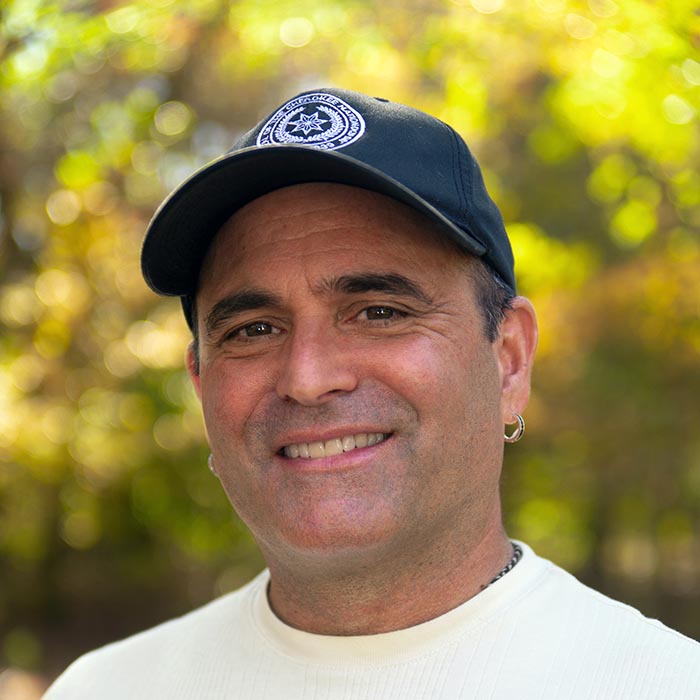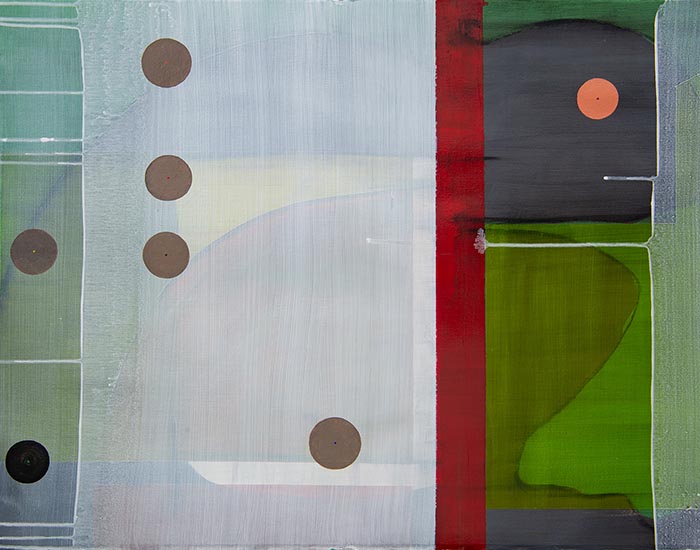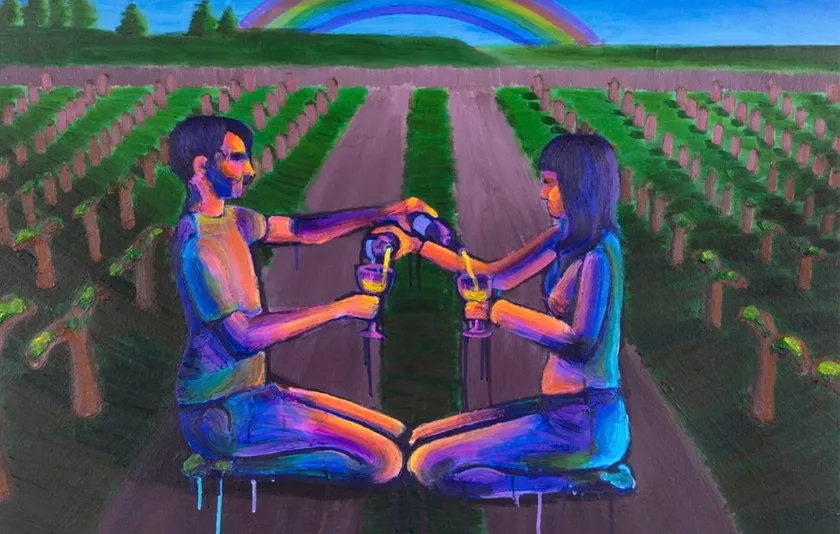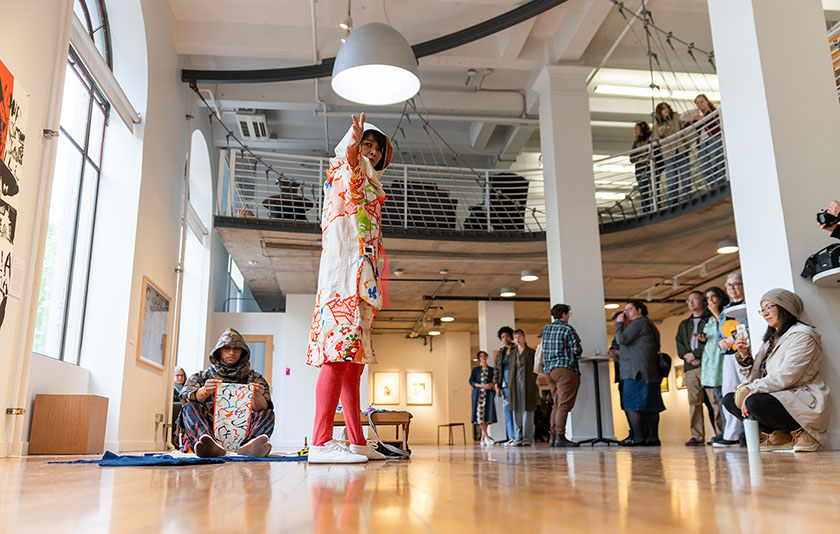For most of his career, Richard York’s paintings were only exhibited in Portland, Bend and Vancouver, Washington. Now they can be viewed by the world.

To recognize Native American Heritage Month, Google commissioned York MFA’14, a member of Cherokee Nation, and four other artists to create a collection of themes for Chromebooks and the Chrome browser. Four of York’s paintings — “Uktena,” “Becoming Being” (pictured above), “Quo Vadis” “A Lot Meant” — are available to download.
Discovered by a global design firm that suggested his work to Google, York modified his original paintings to fit the digital specifications for a browser and background — a first for the company, he said.
“Google was so supportive. They’re really trying to recognize underrepresented groups,” he said. “They told me they wanted my voice to be heard, and that’s what this project was all about.”

In a Google Blog post, Blair Huffman, group product manager for ChromeOS and Cherokee Nation member, said that York’s work brought her back to her childhood.
“‘A Lot Meant,’ reminded me of growing up in Oklahoma and how historical policies like allotment impacted my family and so many others,” she wrote.
The newfound visibility is thrilling to the artist, who was a longtime medical photographer before he enrolled at Pacific Northwest College of Art at age 46.
A father of young children, York decided he’d waited long enough to pursue his childhood dream. Attending PNCA introduced him to mentors like Associate Professor Sally Schoolmaster and former Director of Hallie Ford School of Graduate Studies MK Guth, who were instrumental in helping him find his voice as an artist and gave him the confidence to use it, he said.
PNCA also encouraged him to be open to new experiences and learn how to work with diverse people and ideas. “Part of the job of an artist is realizing a variety of perspectives and needs,” he said.
Formerly based in Milwaukie, York focused his efforts for several years on showings at select locations, including the "Art of the West" exhibit at the High Desert Museum in Bend. Recently, his oeuvre expanded to handmade rawhide hand drums, turtle shakers and flutes, many of which were featured online last year via the Native Arts and Cultures Foundation.
In October, he made a big life change. After 25 years in Oregon, he moved his family to Sequoyah County, Cherokee Nation reservation in Oklahoma.
Rich with personal and tribal history — he lives a few miles from the cabin of Sequoyah, who created the written language for the Cherokee Nation, and near the allotments of his ancestors — York’s new home offers a deep connection to his culture and an excellent space in which to create.
“It’s partially forested, and I do a lot of foraging for dyes and drums I make,” he said. “I’ve fallen in love with it here.”




